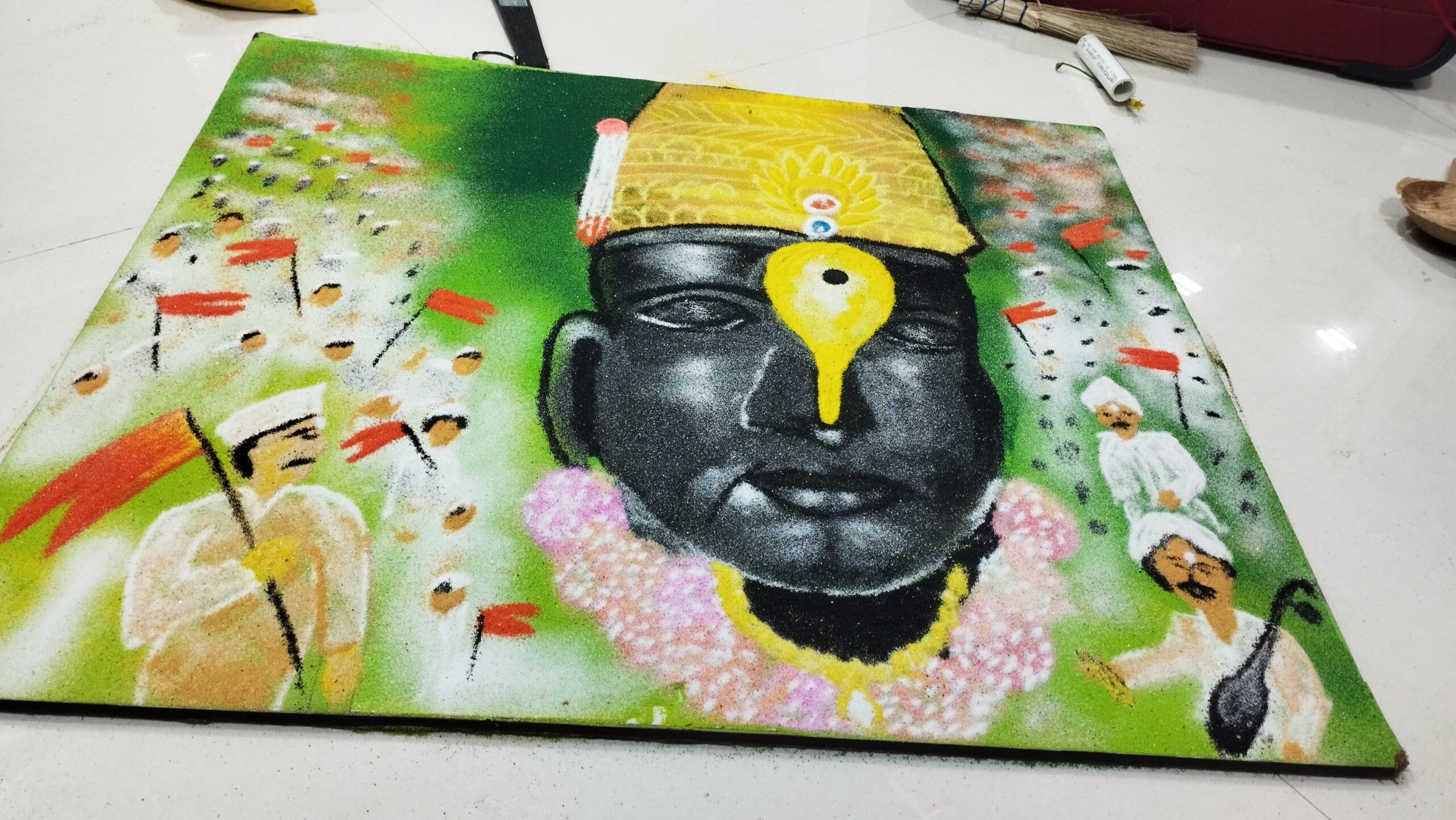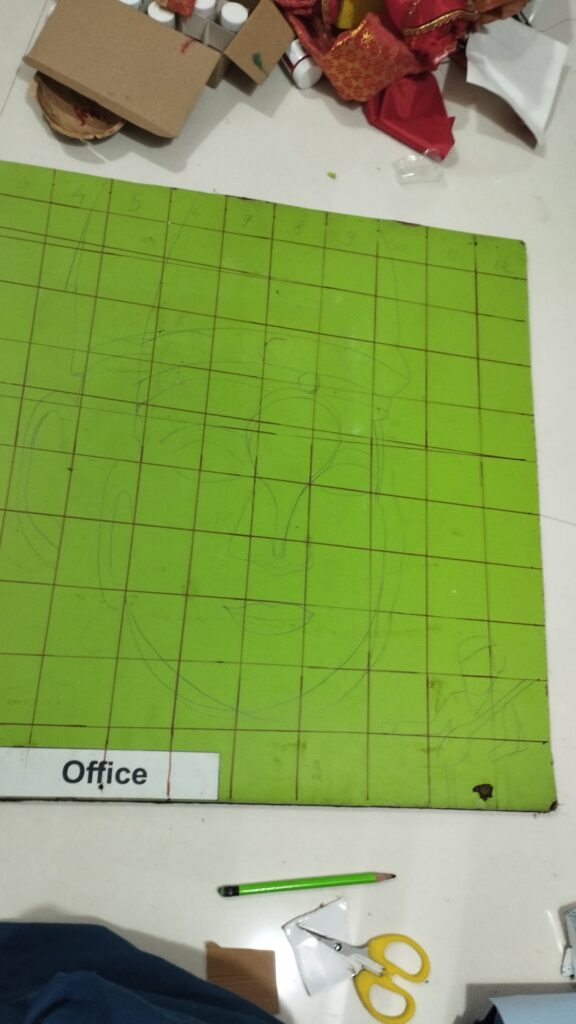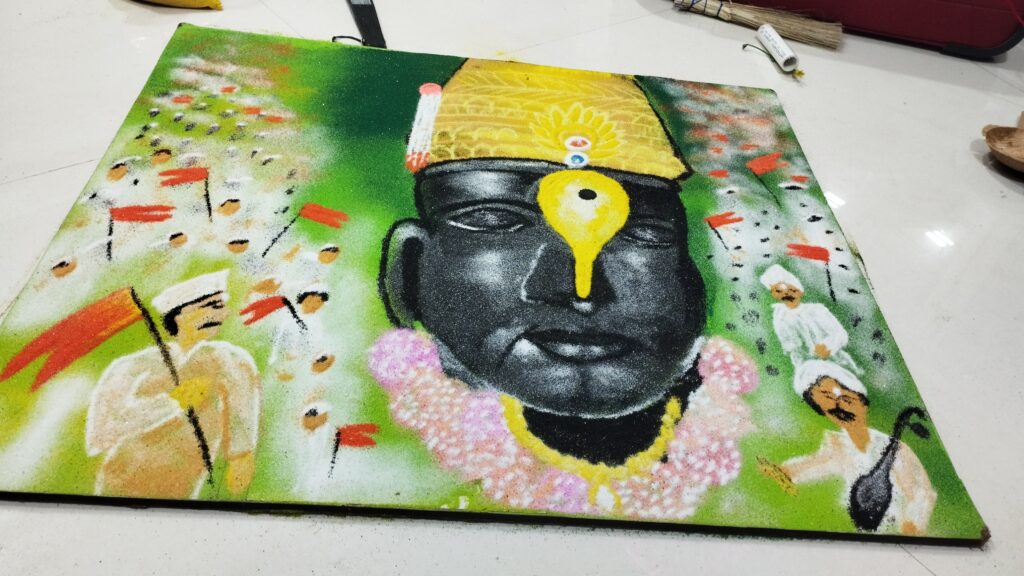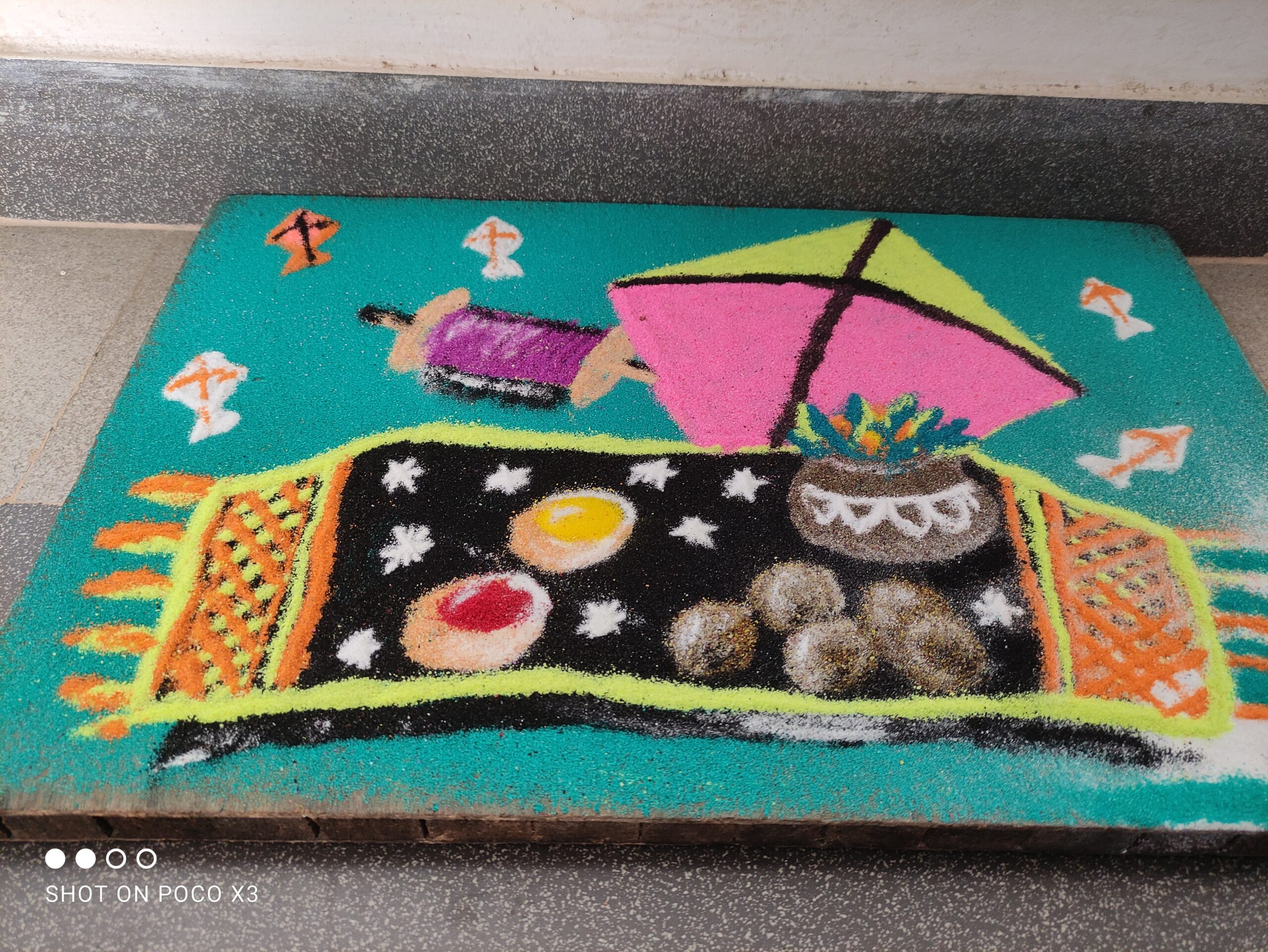Vitthal Rangoli for Ashadhi Ekadashi





Importance of Ashadhi Ekadashi
Q: What is Ashadhi Ekadashi?
A: Ashadhi Ekadashi, also known as Devshayani Ekadashi or Shayani Ekadashi, is an important Hindu festival observed on the 11th lunar day (Ekadashi) of the bright fortnight (Shukla Paksha) in the month of Ashadha (June-July). It marks the beginning of the Chaturmas, a four-month period during which Lord Vishnu is believed to be in a state of cosmic slumber.
Q: Why is Ashadhi Ekadashi significant?
A: Ashadhi Ekadashi is significant because it is considered a highly auspicious day for devotees of Lord Vishnu. It is believed that observing a fast on this day and worshiping Lord Vishnu with devotion can help one attain spiritual benefits, cleanse sins, and achieve liberation (moksha).
Q: How is Ashadhi Ekadashi celebrated?
A: The festival is celebrated with great enthusiasm, especially in the states of Maharashtra and Karnataka. Devotees observe a fast, engage in prayers, and visit temples dedicated to Lord Vishnu. In Maharashtra, a large procession called the Pandharpur Yatra culminates at the Vithoba temple in Pandharpur, where thousands of devotees gather to seek blessings.
Q: What is the spiritual significance of Ashadhi Ekadashi?
A: Spiritually, Ashadhi Ekadashi signifies the importance of devotion, purity, and self-discipline. It encourages individuals to focus on their spiritual growth and seek divine grace. The fast observed on this day is seen as a way to purify the mind and body, allowing devotees to deepen their connection with the divine.
How to Draw Vitthal Rangoli in Simple Language
- Materials Needed:
- Colored rangoli powders (white, black, blue, yellow, red, etc.)
- Chalk or a white marker for outlining
- A small sieve or filter for fine detailing (optional)
- A rangoli stencil for beginners (optional)
- Steps to Draw Vitthal Rangoli: Step 1: Choose a Spot
Find a clean, flat surface at the entrance of your home or in a courtyard. Step 2: Outline the Design
Using chalk or a white marker, lightly draw an outline of Lord Vitthal. Start with the basic shapes, such as the face, body, hands, and feet. Keep the design simple if you are a beginner. Step 3: Fill in the Colors
Begin by filling the body of Lord Vitthal with black or blue rangoli powder. Use your fingers or a small sieve for even distribution. Step 4: Add Details
Add details to the face using white or yellow powder for eyes and lips. Use red or yellow for clothing and ornaments. Step 5: Final Touches
Use contrasting colors to highlight the design’s borders and add patterns like dots or lines for an ornate look. You can use white to enhance the design and create a halo around the deity. Step 6: Clean Up
Carefully clean any excess powder around the design with a small brush or cloth to give it a neat appearance.
Remember, rangoli is an art form that can be adapted based on personal creativity and skill level. Enjoy the process and let your devotion reflect in the artwork!



